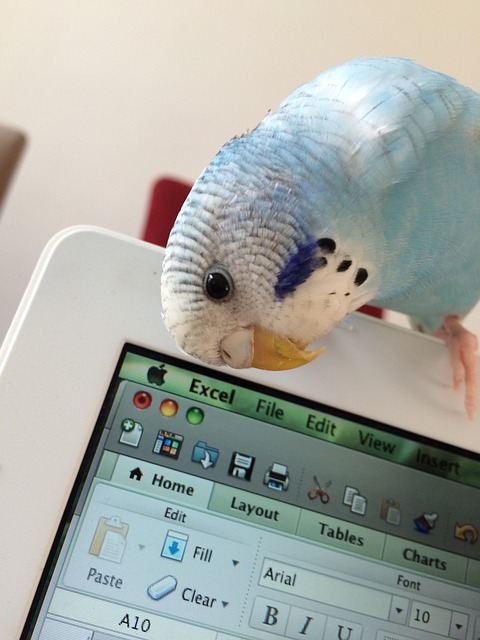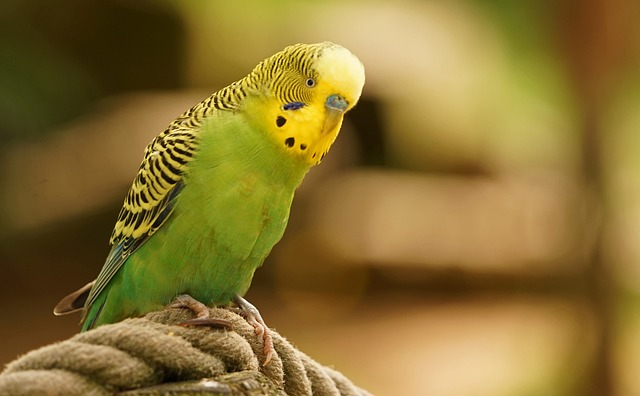Even though the parakeet is small and known to be friendly and affectionate, they are prone to the same sets of problems found in the larger parrot species. And most of these problems are a result of human error.
Your parakeet is a prey animal and you are a predator. That is a fact. When you think about it, it is impressive that something so small can grow to trust such a large natural enemy. But that trust has to be earned.

Our relationship with a parakeet begins on rocky ground and must be slowly and patiently nurtured and maintained to ensure that it blossoms into a relationship based on trust. And how do you earn a parakeet’s trust? By making sure that each and every interaction is a positive one.
Any time that your behavior is questionable, your bird will step back and re-evaluate its relationship with you. If your parakeet has enough of these negative experiences, it will eventually decide that you can’t be trusted and the relationship will deteriorate.
How do you build and maintain trust? The single most effective way is through training. Training is a positive experience for your bird. To begin with, the bird quickly sees it as an opportunity to earn rewards, and will eagerly participate for that reason alone.
But it gets so much more than just a delicious treat. The interaction between you and your bird during training is very focused and intimate. An intense bond is built and compounded with every future session. Your intelligent parakeet has the opportunity to use its brain in ways that aren’t otherwise available in captive life.
Every bird should be taught some basic skills that are manageable in everyday life and in the event of an emergency. Here are a few scenarios showing how training can help you solve common problems:
- You are giving your parakeet some needed out-of-cage time. However, he is not particularly fond of your hands and you can’t catch him when it’s time to go back into his cage. You spend the next couple of hours trying to lure him in with a treat.
- Your parakeet has an appointment for an exam with the vet. The problem is that every time you try to put him in that big, scary carrier, he squirms from your grasp and flies away.
- You reach into the cage to retrieve your little darling, but instead of a gentle step onto your hand, you receive a painful bite. You pull your hand out surprised at the power in that tiny beak, but your feelings are hurt worse.
None of these circumstances have to be yours. Parakeets are so easily trained that a child can do it with the right instruction.
The first steps in training your parakeet are simple and can start with your bird inside its cage. Most parakeets come from pet shops clipped, and so they will be very fearful of people as clipping has meant in the past that they were forced to interact with humans rather than choosing to. Because parrots resort to “fight or flight”, and clipped birds don’t have the option of flight, clipped birds tend to fight (ie: BITE!)
The best thing you can do in the time frame it takes to let your bird’s wing feathers molt out and regrow is to start training your bird while it is still inside its cage so it knows you mean no threat. You can do this by taking your clicker (which can be purchased at your local pet store for around $2) and “clicker conditioning” your parakeet. As demonstrated in the video below.
Simply click your clicker and offer your parakeet a bite or two of the spray millet through the cage bars. You will know he understands what the clicker means when he is anticipating the reward of the millet. Make sure he really understands by keeping the millet out of sight as you progress in the training.

Training a Parakeet to Respond to the Clicker
Once your parakeet understands what a clicker is, he will be looking forward to interacting with you because clicks = treats! This is the first step in emotionally conditioning your bird that you = positive interaction! And will be the first in many steps you take to bond with your bird, as well as learn techniques to allow others to bond with your bird, too!
The next step we teach is “touch training” which is another behavior that can be trained while your bird still spends time in the comfort zone of his cage.
Simply get an unused chopstick and your clicker, along with your spray millet. Encourage your bird to touch the end of the stick with its beak, and click and reward when it does. Most birds are naturally curious enough to touch the stick with no problem while others might shy away from it. If your bird is showing signs of being scared of the chopstick try these tips:
- Never come at your bird in a threatening way with the stick, keep things slow and non-threatening. No sudden movements.
- Make sure there are no distractions during your training that will deter your bird’s attention.
- Try holding the spray millet close to the end of the chopstick to entice your bird to get closer.
- Reward your bird for just looking at the stick or even getting close to it, slowly working its way closer.
- If you have another bird in your household that is touch trained, use observational learning by letting the untrained bird watch the trained bird earn treats.
